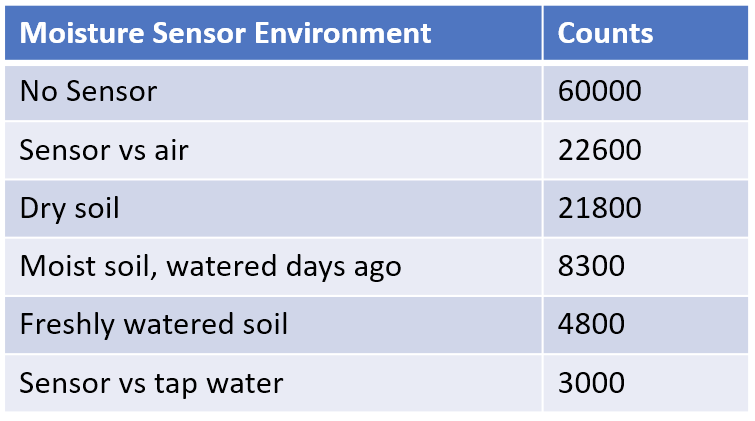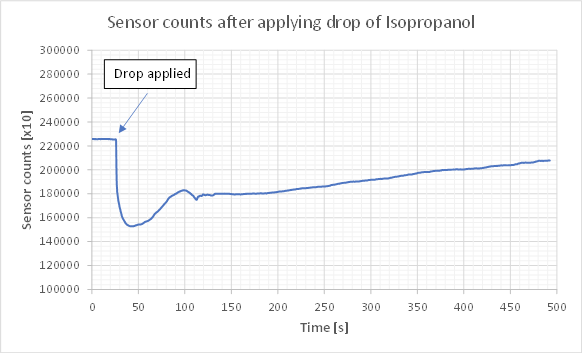One curious type of sensor that can be realized with simple means is a soil moisture sensor to monitor wether plants need to be watered. A simple way of achieving this is to measure the soil resistivity with two electrodes. Unfortunately that is not very reliable due to corrosion of the electrodes.
A much better approach is a capacitive sensor, for example as shown here. The sensing principle exploits the fact that water has a much higher (~80) relative dielectric constant than dry sol or air (~1). The sensing element consists of a planar capacitor that is directly inserted into the soil. This can be very easily realized by copper traces on a PCB that is insulated with solder resist. Coincidentally I found a sensing element that I designed years ago. The layout is shown here:

Below you can see how it is inserted into a potted plant.

Since this sensor is essentially a variable capacitor, it can be easily read out with the RFC peripheral. Since the capacitance of the sensor is relatively low, I chose a resistor of 47 kOhm to achieved a reasonably low frequency.
Of course, the resistor does also directly influence current consumption of the oscillator, hence choosing a larger resistor is sensible. 

In summary, the RFC seems to be well suited for this application. Time for a design project?
 Tim
Tim
Discussions
Become a Hackaday.io Member
Create an account to leave a comment. Already have an account? Log In.